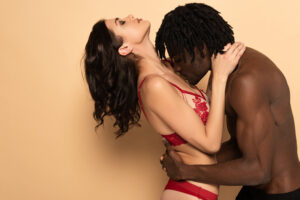Erotic Art through the Ages: A Cultural Perspective
Erotic art has been a significant aspect of human expression throughout history, reflecting cultural attitudes, societal norms, and the evolution of artistic expression. From ancient civilizations to contemporary times, artists have explored themes of desire, sensuality, and the human body through various mediums. Let’s journey through different historical periods and cultural perspectives to explore the rich and diverse world of erotic art.
Ancient Civilizations: Embracing Sensuality
- Ancient Greek and Roman Art: Sculptures and pottery from ancient Greece and Rome often depicted nude figures and mythological scenes that celebrated physical beauty and sensuality. Artworks like the statue of Venus de Milo and the frescoes of Pompeii highlight the Greeks’ and Romans’ appreciation for the human form and eroticism.
- Indian Erotic Art: In India, the Khajuraho temples (built between 950 and 1150 CE) feature intricate carvings depicting various aspects of life, including erotic and sexual themes. These sculptures celebrate the union of physical and spiritual aspects of life, emphasizing fertility, love, and pleasure.
Medieval and Renaissance Europe: Symbolism and Secrecy
- Medieval Manuscripts: Illuminated manuscripts from the medieval period sometimes contained hidden or allegorical depictions of eroticism and carnal desire, often intertwined with religious symbolism and moral teachings.
- Renaissance Art: During the Renaissance, artists like Titian, Botticelli, and Michelangelo explored themes of love, beauty, and sensuality in their paintings and sculptures. Works such as Titian’s “Venus of Urbino” and Botticelli’s “The Birth of Venus” reflect a celebration of human beauty and eroticism in a cultural context.
Eastern Traditions: Symbolism and Harmony
- Japanese Shunga: Shunga, a genre of Japanese erotic art, flourished during the Edo period (1603-1868). These woodblock prints and paintings depicted explicit sexual scenes with humor and elegance, exploring themes of pleasure, intimacy, and human desire.
- Chinese Erotic Art: Chinese art also includes depictions of eroticism dating back to ancient times, often blending sensuality with cultural symbolism and philosophical concepts such as yin and yang.
Modern and Contemporary Perspectives: Breaking Taboos
- 20th Century Avant-Garde Movements: Artists like Gustav Klimt, Egon Schiele, and Frida Kahlo challenged societal norms with their bold and introspective explorations of sexuality and identity in the early 20th century.
- Contemporary Erotic Art: Today, artists around the world continue to explore erotic themes through various mediums, addressing contemporary issues of gender, identity, and sexual liberation. Works range from photography and digital art to performance and installation pieces, reflecting diverse perspectives and cultural contexts.
Conclusion
Erotic art has evolved alongside human civilization, offering a lens through which we can explore the complexities of desire, intimacy, and cultural identity. Across different cultures and historical periods, artists have used their creativity to celebrate the beauty of the human form and challenge societal taboos surrounding sexuality.








